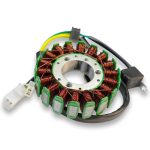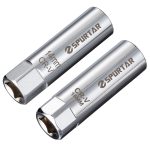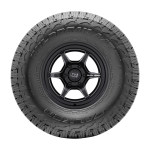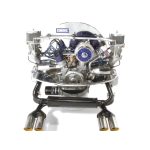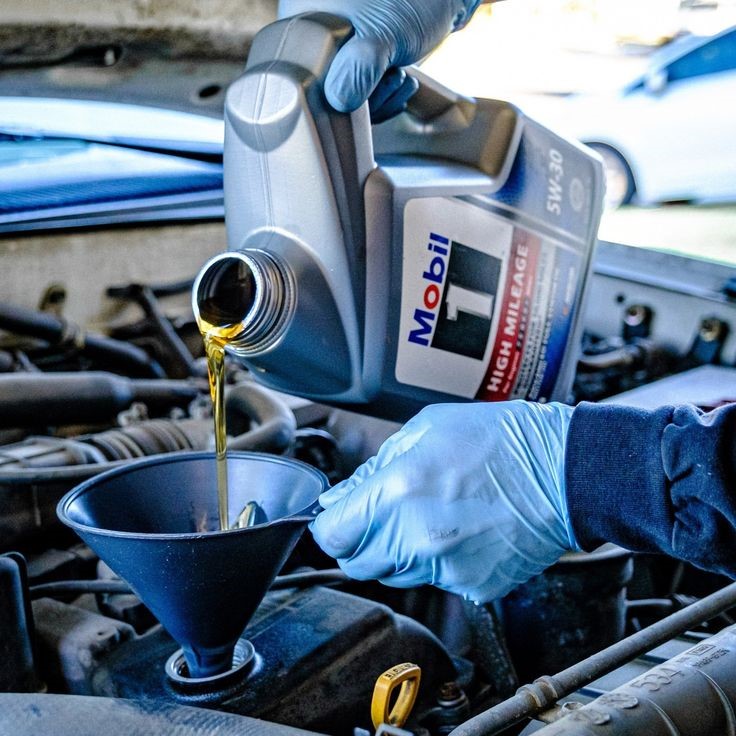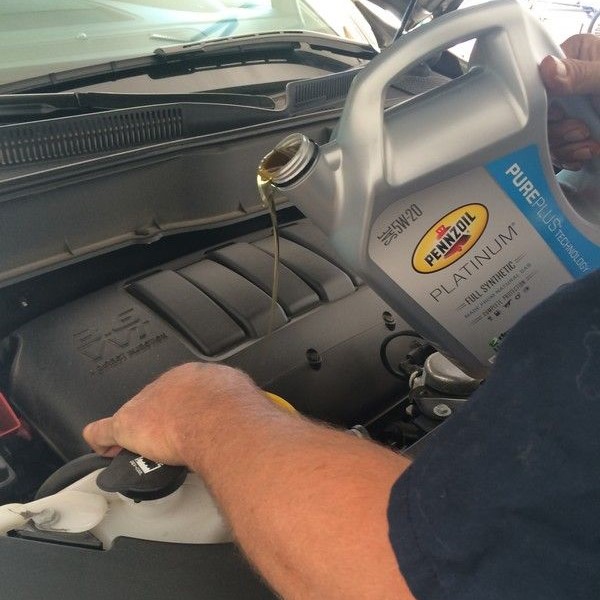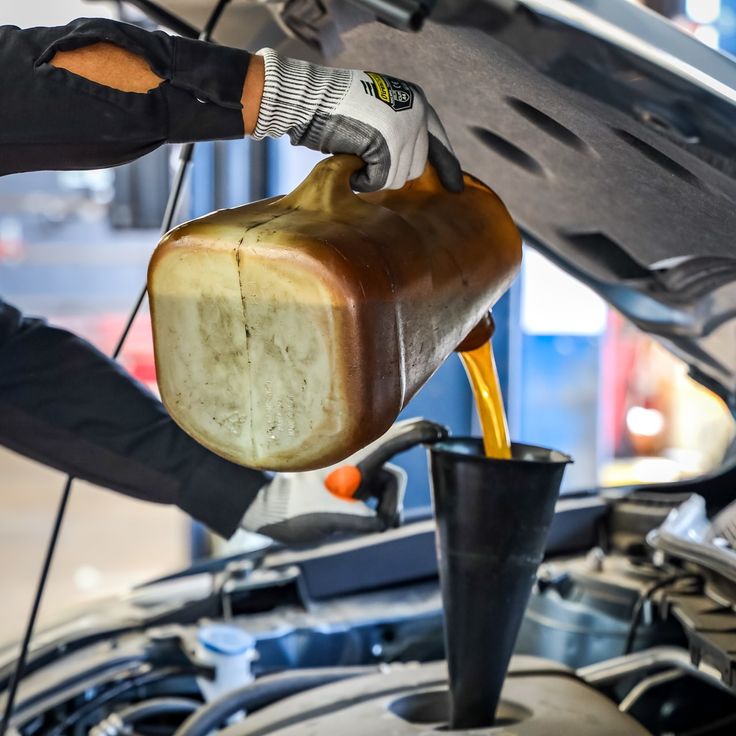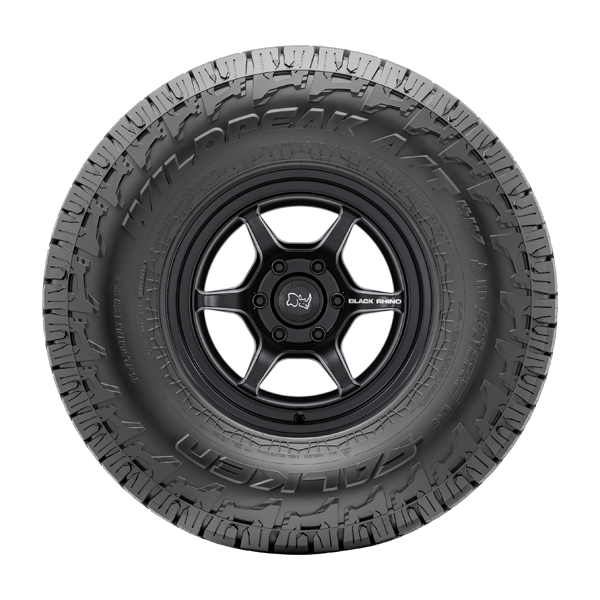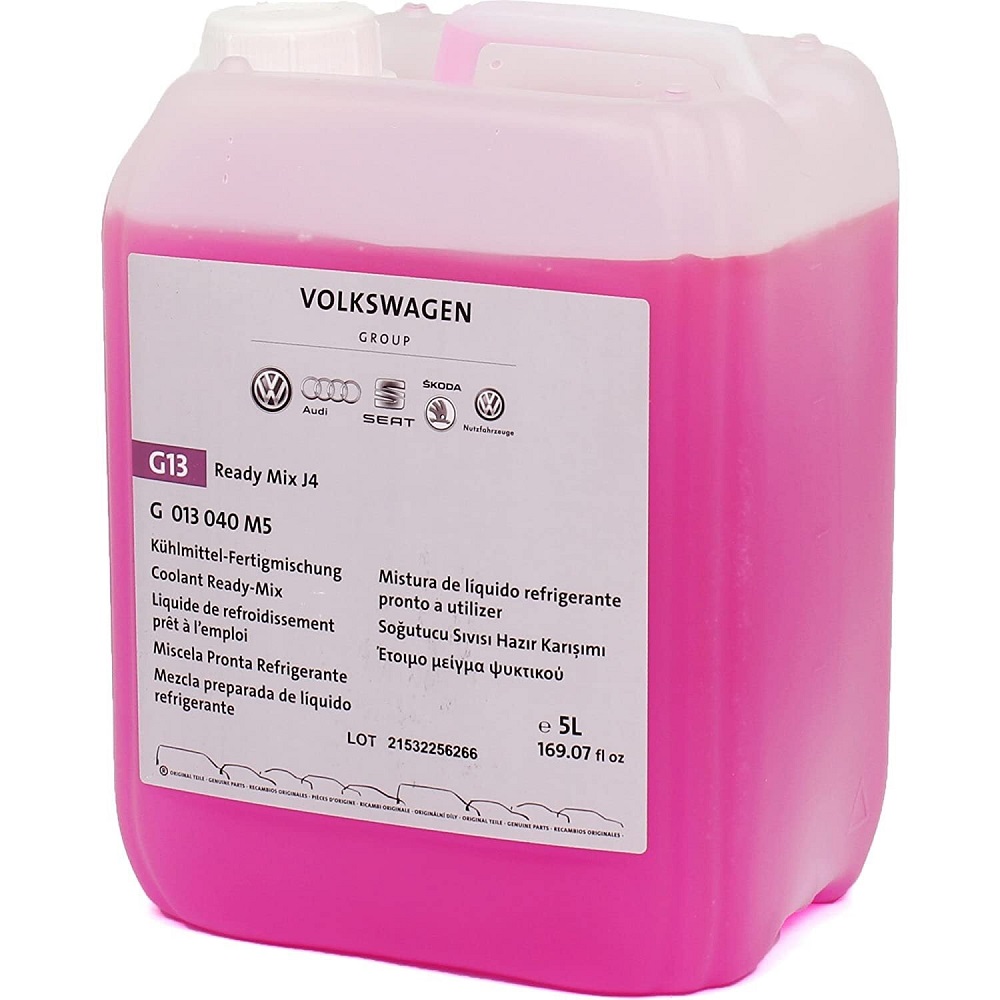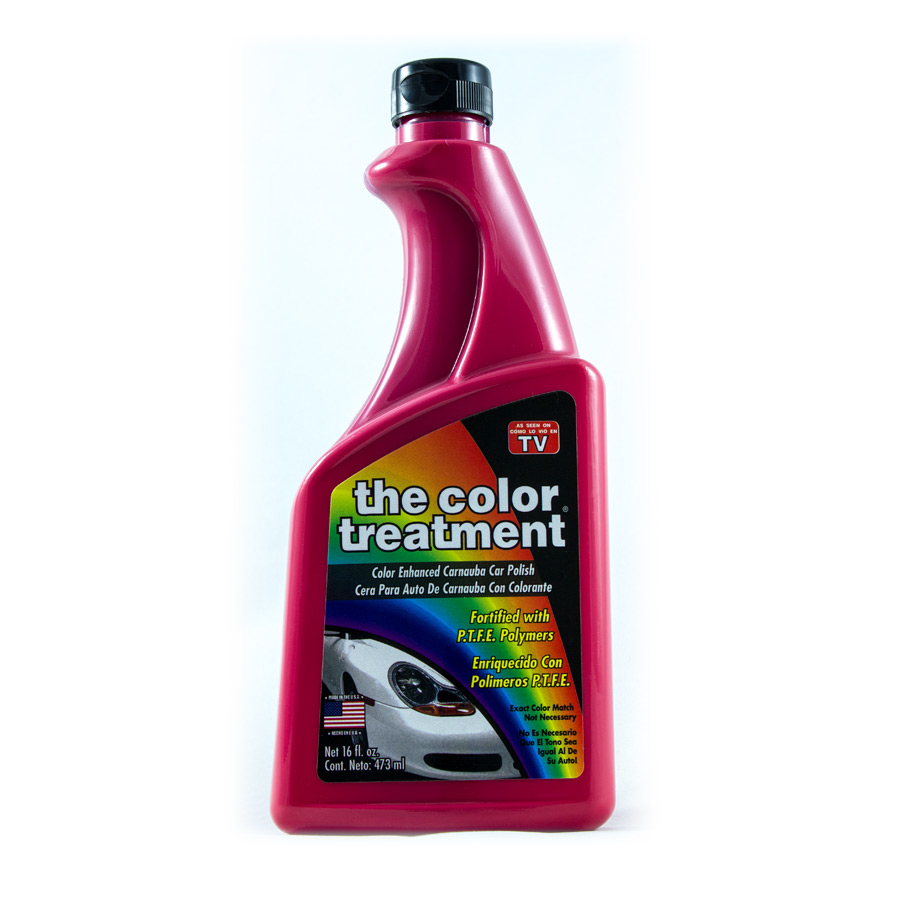Introduction: Understanding the Importance of Engine Oil
Maintaining your vehicle’s engine is crucial for its longevity. One key component of engine health is motor oil. However, a common question arises: What happens if you put too much oil in your car? Discover now the potential consequences and what you should do if it happens. This article will explore the implications of overfilling oil, how it affects your engine, and essential tips for proper oil maintenance.
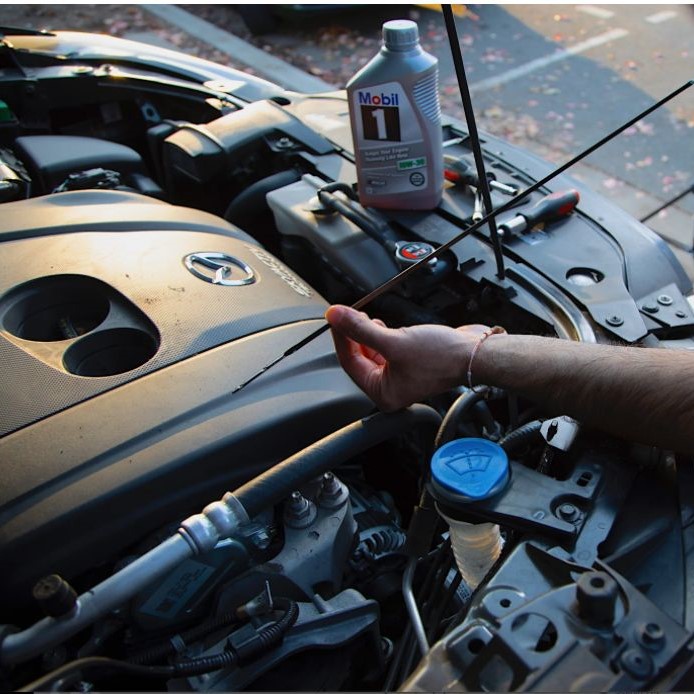
Signs That You’ve Overfilled Your Car’s Oil
What happens if you put too much oil in your car? Overfilling oil in your car can lead to serious problems. Recognizing the signs early can save your engine and your wallet. Below are the most noticeable signs that your car may have too much oil.
Visual indicators of oil overfill
- Oil puddles under the car: Excess oil can leak out, forming puddles beneath your vehicle.
- Smoke from the exhaust: Too much oil can produce gray or blue smoke from the exhaust pipe.
- Oil level on the dipstick: The dipstick will show a reading above the maximum line.
- Oil in the engine bay: An overfilled engine might push oil out into the engine bay.
Dashboard warnings and oil pressure changes
- Engine warning light: The dashboard warning light might turn on due to high oil levels.
- Increased oil pressure: Excess oil can cause higher-than-normal oil pressure, which may damage engine components.
- Unusual noises from the engine: Overfilled oil can lead to internal engine strain, causing odd noises during operation.
Identifying these signs early can help you address the issue before it leads to more serious damage. Regular oil checks are crucial for maintaining your car’s health and performance.
Potential Risks of Having Too Much Oil in Your Car
Excessive oil in your car can cause serious damage to critical engine components. Understanding these potential risks will help you protect the longevity and performance of your vehicle.
Engine damage caused by oil foaming
When there’s too much oil, the crankshaft churns it into foam. Foamy oil cannot lubricate your engine effectively. Poor lubrication leads to increased friction and heat inside the engine. This can result in accelerated wear, overheating, or even complete engine failure.
Increased pressure leading to oil seal leaks
Overfilled oil raises internal engine pressure. Elevated pressure increases stress on oil seals and gaskets, causing them to leak. If leaks occur, oil can spill onto vital engine parts, creating further damage. Repairing oil seal leaks can be costly and time-consuming.
Catalytic converter and exhaust system damage
Excessively high oil levels can push oil into the exhaust system. Oil in the exhaust can clog the catalytic converter, reducing its efficiency. A damaged catalytic converter affects emission control and may require costly replacement. Prolonged exposure can also harm other components of the exhaust system.
Too much oil in your car is a risk you should avoid. Regular maintenance and proper oil level checks are critical to keeping your engine safe and functional.
The Effects of Overfilled Oil on Engine Performance
What happens if you put too much oil in your car? Excessive oil in your engine has immediate and long-term effects on its performance. Understanding these impacts can help you take better care of your car.
Impact on fuel efficiency
Overfilled oil can severely reduce fuel efficiency. Excess oil creates resistance for moving engine components. Increased resistance makes the engine work harder, burning more fuel. Furthermore, foamy oil, a result of overfilling, doesn’t lubricate effectively. Poor lubrication leads to higher energy consumption. This directly translates to more frequent trips to the gas station. Maintaining the correct oil level ensures optimal fuel economy and smoother operations.
Possible reduction in engine lifespan
Too much oil shortens your engine’s lifespan. Excess oil generates higher pressure within the engine. This pressure puts undue stress on critical components, causing faster wear and tear. Additionally, insufficient lubrication from foamy oil increases friction. Constant friction raises engine temperatures, leading to overheating and potential long-term damage. Over time, these issues can result in total engine failure. Regularly checking your oil level protects your engine and extends its life.
How to Check Your Car’s Oil Level Correctly
Regularly checking your car’s oil level is essential for maintaining a healthy engine. An accurate oil level prevents issues caused by overfilled or underfilled oil. Below, you’ll learn about the tools and steps needed for this task.
Tools needed to measure oil level
- Clean cloth or paper towel: You need this to wipe the dipstick while checking the oil level.
- Dipstick: Your vehicle’s dipstick is designed to measure the current oil level.
- Proper lighting: Adequate light helps you read the dipstick markings correctly.
- Owner’s manual for your car: It provides guidance specific to your vehicle, ensuring a more precise check.
Having these tools ready ensures the process is simple and accurate.
Step-by-step guide to checking oil level
- Park on a level surface: Ensure your car is on flat ground for an accurate reading.
- Turn off the engine: Let the engine cool for 5–10 minutes before checking.
- Locate the dipstick: Open the hood and find the dipstick, usually marked with a ring or handle.
- Pull out the dipstick: Remove it carefully and wipe it clean with a cloth or towel.
- Reinsert the dipstick fully: Push it back into the tube completely.
- Pull it out again: Remove the dipstick and check where the oil level falls between the markings.
- Compare to recommended range: Make sure the oil is within the minimum and maximum marks on the dipstick.
- Add oil if needed: If the level is below the minimum, top up the oil carefully.
Following these steps prevents overfilling or underfilling your oil, ensuring optimal engine performance. Regular checks based on the manufacturer guidelines help you catch potential issues early.
What to Do If You Accidentally Put Too Much Oil
Overfilling oil in your car can harm your engine. Addressing the issue quickly protects your car and saves repair costs. Here are the steps you should follow to handle the situation effectively.
Solutions for removing excess oil
- Use an oil extractor pump: This tool helps remove excess oil safely without removing the drain plug.
- Insert the pump tube into the dipstick tube.
- Pump out a small amount of oil.
- Recheck the oil level with the dipstick and continue until it’s correct.
- Drain oil manually: If you don’t have an extractor pump, this method works effectively.
- Place a pan under the oil drain plug.
- Unscrew the plug slightly to let some oil flow out.
- Tighten the plug and check the dipstick frequently to avoid removing too much oil.
- Take your car to a nearby mechanic: Mechanics have the proper tools for quick and precise oil correction.
Removing excessive oil promptly ensures proper lubrication, protects engine parts, and prevents damage.
When to consult a professional mechanic
You should consult a mechanic if:
- You don’t have the tools or experience: Improper handling can worsen the problem.
- The oil level caused engine issues: Symptoms like engine noise or warning lights require immediate attention.
- You’re unsure about the correct oil level: Mechanics ensure accurate adjustments per your car’s specifications.
- You suspect damage: Leaks, smoke, or odd car behavior may indicate severe damage from overfilled oil.
Professional help avoids potential risks from handling it yourself. Prompt action prevents greater harm to your engine and other parts. Maintaining correct oil levels safeguards performance and extends your vehicle’s life.
Preventing Overfilling: Tips for Proper Oil Maintenance
What happens if you put too much oil in your car? Overfilling your car’s oil can lead to costly damage and performance issues. Preventative steps ensure your engine stays healthy and operates efficiently. Let’s explore effective ways to maintain the correct oil levels.
Tips for adding oil accurately
- Check oil levels regularly: Always use the dipstick to measure the current oil level before adding more.
- Add oil gradually: Pour small amounts of oil and check the level frequently to avoid overfilling.
- Use a funnel: A funnel helps you pour oil precisely and prevents spills.
- Know your engine’s capacity: Refer to your car’s manual for the exact oil capacity requirements.
- Top up only when needed: Avoid adding oil unnecessarily if it’s already between the minimum and maximum marks.
These simple steps ensure accurate oil addition and protect your car from overfilling problems.
Importance of following manufacturer guidelines
Manufacturer Specifications Matter
- Importance of the Owner’s Manual: The owner’s manual is a crucial resource for vehicle maintenance. It provides detailed guidance on the specifications outlined by the manufacturer regarding oil type and quantity.
- Correct Oil Type: Manufacturers recommend specific oil types based on the engine design and materials. Using the correct oil type helps ensure optimal lubrication and protection for engine components, aiding in overall performance and longevity.
- Importance of Accurate Oil Quantity: The manual typically details the exact oil quantity required for the engine. Using too little oil can lead to insufficient lubrication, which increases the risk of engine wear or damage, while using too much can cause excess pressure and leaks.
Recommended Oil Changes Improve Performance
- Intervals for Oil Changes: Manufacturers usually outline specific intervals for oil changes, which may vary based on the type of oil used and driving conditions. Following these recommendations is essential for maintaining engine efficiency and performance.
- Effects of Oil Changes on Performance: Regular oil changes help keep the engine clean and well-lubricated. Fresh oil helps reduce friction among moving parts, improving performance and fuel efficiency while also extending engine life.
- Preventing Engine Damage: Neglecting recommended oil changes can lead to the buildup of sludge and contaminants, which can hinder engine function. This, in turn, could result in costly repairs or reduced vehicle reliability.
Avoid DIY Shortcuts
- Risks of Improper Oil Handling: While some vehicle owners may consider changing oil themselves to save money, improper handling of oil can lead to serious problems such as leaks or engine strain. Understanding the correct processes is vital.
- Potential Consequences: Taking shortcuts during an oil change, such as neglecting to dispose of old oil properly or not replacing the oil filter, can have long-term negative impacts on engine health and performance.
- Professional Assistance: When in doubt, seeking help from a professional mechanic can ensure that oil changes are performed correctly. This is especially important for complex vehicles or for those who lack experience with car maintenance.
Safe Operating Range Ensures Engine Health
- Understanding the Dipstick: The dipstick is an important tool for monitoring oil levels in an engine. It typically has marked levels that indicate the safe operating range for oil.
- Consequences of Low Oil Levels: Running an engine with oil levels below the recommended mark can lead to insufficient lubrication, increased friction, and ultimately, engine damage. It’s crucial to regularly check oil levels to ensure they are safe.
- Risks of Excess Oil: Conversely, exceeding the marked levels can result in excessive pressure, leading to leaks and potential damage to engine seals. Adhering to the specified range on the dipstick is essential for preventing complications and ensuring the overall health of the engine.
Manufacturer guidelines are your primary resource for maintaining optimal oil levels. Following them eliminates risks caused by overfilled or incorrect oil. Regular maintenance according to these standards keeps your car running smoothly and efficiently.
Related Costs and Repairs for Overfilled Oil Issues
What happens if you put too much oil in your car? Overfilling oil in your car can lead to costly repair bills. Understanding these expenses prepares you for potential financial impacts.
Possible repair costs for engine damage
Excessive oil in your engine can cause serious damage. This damage often includes worn components and overheating. Repairs may require replacing damaged parts like pistons, bearings, or even the entire engine. The cost of fixing such damage can range from $1,500 to over $5,000. Early detection and addressing overfilled oil can help you avoid these hefty charges.
Expenses for catalytic converter replacement
Overfilled oil can push oil into your exhaust system, damaging the catalytic converter. A clogged or ruined catalytic converter reduces your vehicle’s efficiency and increases emissions. Replacing it is expensive, with costs typically ranging between $900 and $2,500. Regular oil level checks can prevent such damage, saving you significant repair expenses over time.
By maintaining correct oil levels and addressing issues promptly, you reduce the risk of these costly repairs. Regular maintenance protects both your engine and your wallet.
Common Myths About Overfilled Oil
Overfilling your car’s oil is a common issue surrounded by misconceptions. Clarifying these myths ensures better understanding and proper car maintenance.
Debunking misconceptions surrounding oil levels
- More oil means better lubrication: This is false. Excess oil can lead to foaming and reduced lubrication.
- Overfilled oil causes no harm: Incorrect. It can damage seals, gaskets, and critical engine components.
- Oil doesn’t need checking if you recently added it: Levels may still be incorrect due to leaks or mistakes.
- Adding oil frequently prevents problems: Adding excess oil creates issues. Always check levels before topping up.
Understanding these myths helps avoid costly mistakes. Proper oil management is crucial for engine health.
Clarification on acceptable oil level ranges
- The dipstick’s range is the guiding rule: Keep oil between the minimum and maximum marks.
- Ignoring the dipstick reading: Overfilled oil can cause leaks and performance drops.
- Trust professional advice if unsure about oil levels: Mechanics ensure appropriate amounts based on your engine.
Acceptable ranges protect your engine and ensure optimal performance. Stick to the guidelines for a smooth-running car.
Conclusion: Understanding Oil Management Matters
In conclusion, understanding what happens if you put too much oil in your car is vital for every vehicle owner. Proper oil management is essential to maintaining engine health and preventing costly repairs. By being cautious about oil levels and performing regular maintenance, you can enjoy a smoothly running engine without the fear of potential issues caused by overfilling.
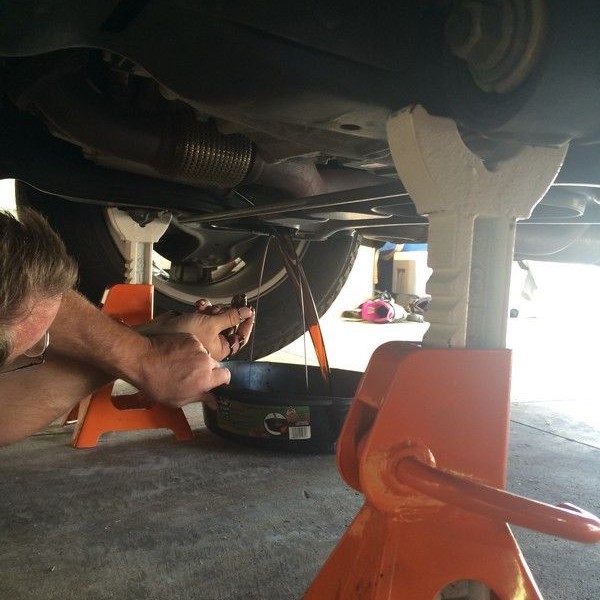
Always remember to monitor your oil levels and know the proper steps to take if an overfill occurs. With these practices in place, you can safeguard your vehicle and ensure it remains in great working condition for many miles to come. Taking proactive measures not only prolongs the life of your engine but also enhances your overall driving experience.
